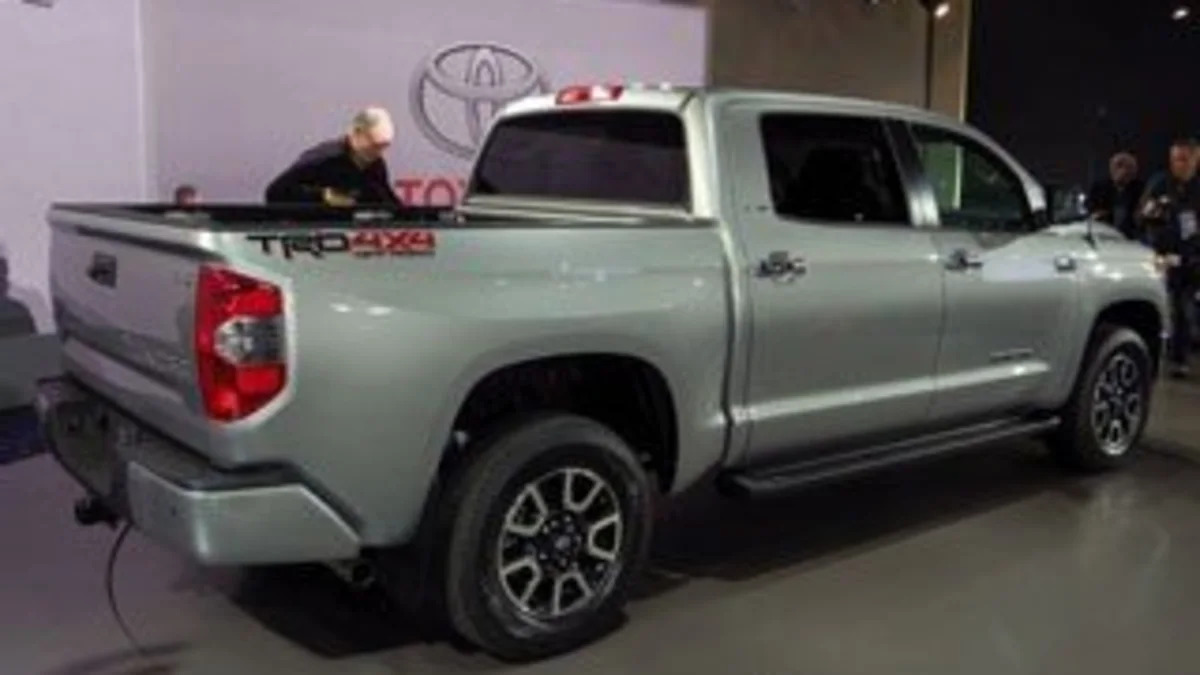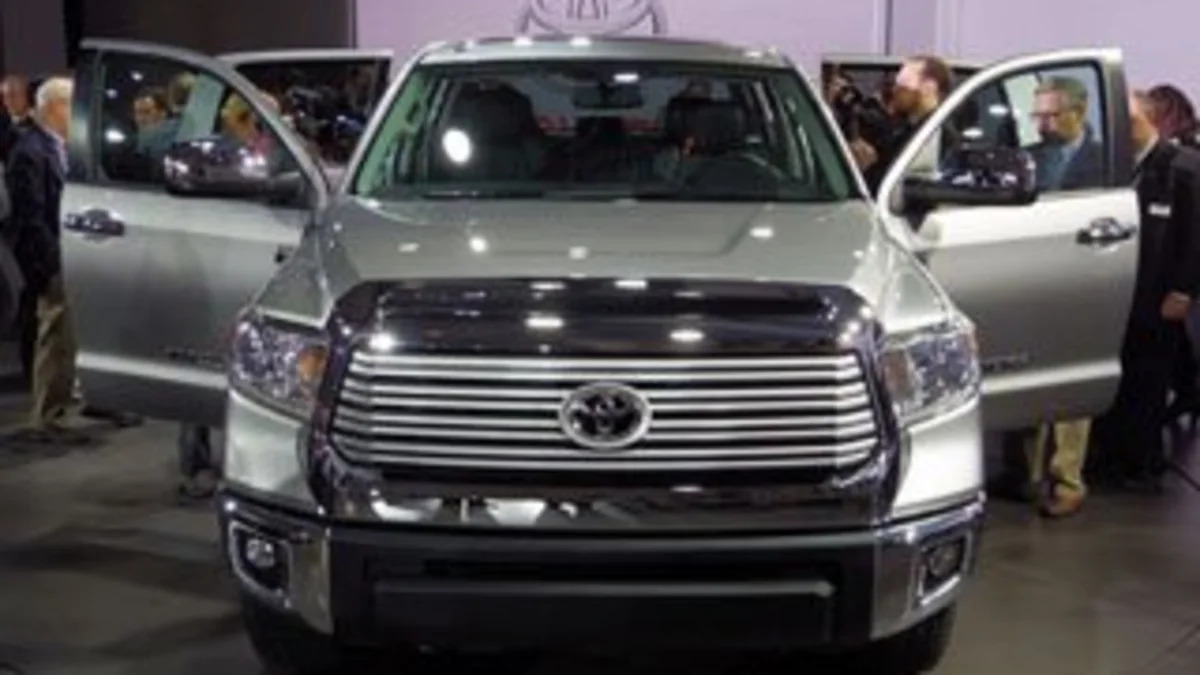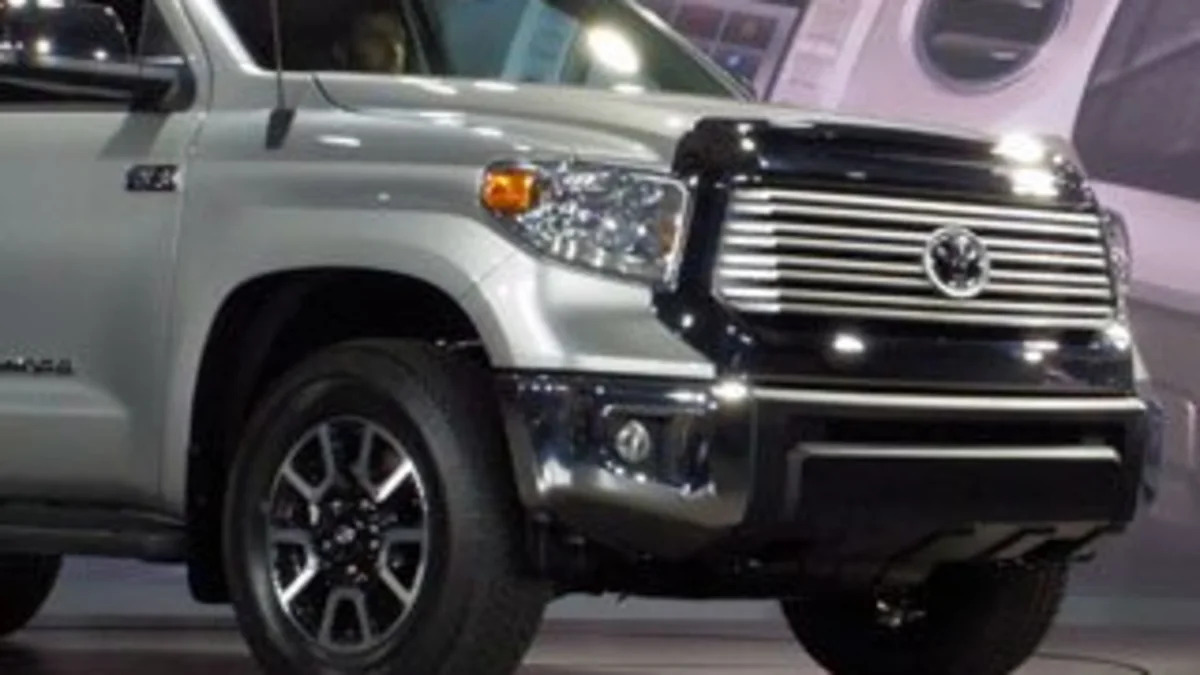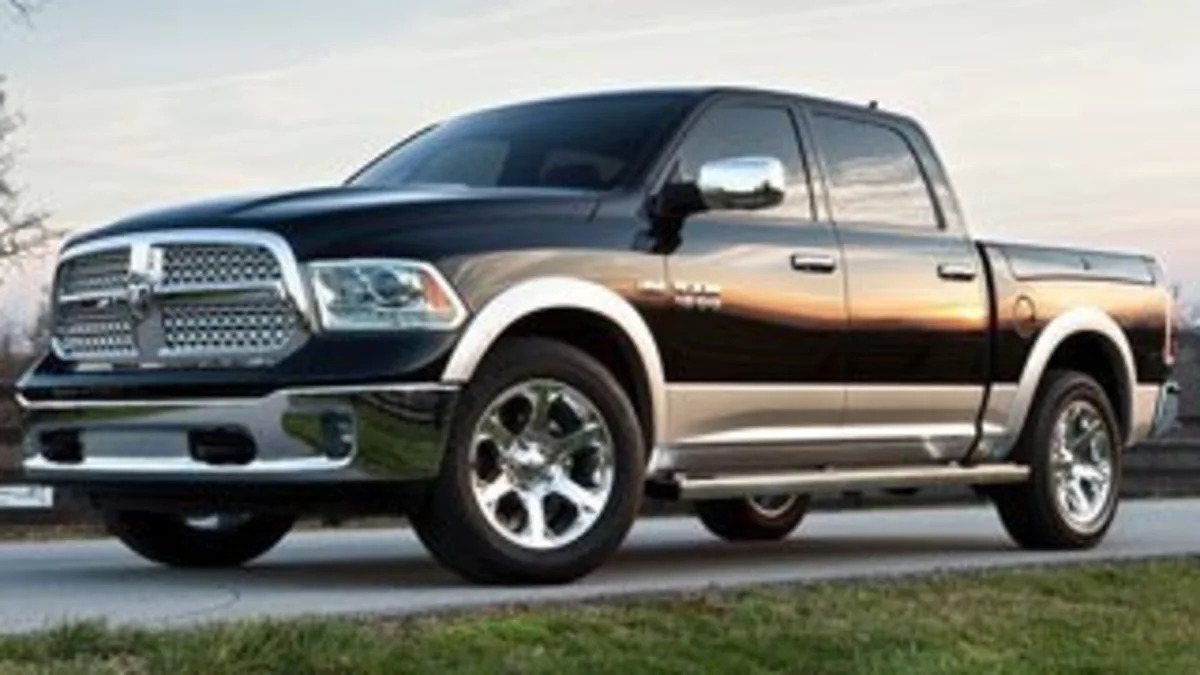Toyota Takes Aim Again At Detroit's Pickup Truck Dominance

-

- Image Credit: Autoblog
Seven years ago, Toyota made much of its debut of an all-new Tundra pickup truck at the Chicago Auto Show. The story was that the Japanese automaker, which had achieved status for building the best selling passenger car in the U.S., the Camry, was finally ready to go after Ford, GM and Chrysler in the hugely profitable pickup truck market.
The result was one big pffffffft. While sales of the Tundra peaked in 2007 at 196,555 sales, the number of buyers of the pickup tumbled to 79,385 in 2009 when the U.S. economy and especially the housing sector collapsed. It rebounded to 101,621 last year. The San Antonio plant built for the Tundra's lofty sales targets can handle in excess of 200,000 a year, so it's running at half capacity.
It's not that Toyota made a bad truck. The truck on the market today has a towing capacity of up to 10,000 pounds, a payload capacity of over 2,000 lb (910 kg). There are three engine choices: a 5.7-liter V8 engine mated to a 6-speed automatic transmission; a 4.7-liter V8 rated at 276 horsepower and a 4.0-liter V6 rated at 236 horsepower. Consumer Reports has rated the Tundra second best pickup on the market. Edmunds.com rated it second best pickup in 2009. J.D. Power & Associates has rated it tops for quality. -
- Image Credit: Toyota
But Toyota ran up against a buzz-saw in Detroit. Ford, GM and Chrysler's Ram brand all make enormous profits from pickups. And as Toyota ramped up to build a "serious" truck, the Detroit Three seemed to double down on what they already did better than Japan. "The pickup truck market is driven by the construction and farming industries, and those buyers have enormous history with Ford and GM especially," says brand consultant Dennis Keene. "The expertise Detroit has in building enormously tough, rugged and capable pickups is hard won, long established and has built great brand loyalty for them."
Toyota studied the American truck market like they had never done before. Toyota engineers immersed themselves in Sunbelt America. They hung out at NASCAR events and camped out at ranches in South Texas and Oklahoma. They even went to RV camps and persuaded families to let them travel along so they could get up close and personal studying how people use their trucks. The company also developed the truck at its research-and-development center in Ann Arbor, Mich., about 40 miles from Ford and GM headquarters. -
- Image Credit: Toyota
Ford's global marketing chief Jim Farley launched the Tundra for Toyota when he was at the company in 2006. "It wasn't until I came to Ford and the engineers here tore down the Tundra, as well as the Nissan Titan, for me that I understood what we didn't know at Toyota about building a world class, durable, credible pickup truck," Farley told AOL Autos in an interview.
Americans bought almost two million pickups last year, a number that is expected to go up by perhaps 10% this year. Ford led all truck sellers with 645,000. GM sold 575,000 and Ram sold 293,000.
Toyota this week unveiled a new version of the Tundra, it's third try to make serious headway against Detroit. What's different this time? -
- Image Credit: Autoblog
The answer is: The stuff on the outside. For better or worse the changes that Toyota has made to the fullsize pickup are mostly cosmetic, with the underpinnings of the vehicle staying unchanged.
There's a new grille, along with a revised, three-part front bumper design. Fenders and wheel wells are more square than in the out-going truck, too. Perhaps most significant is the revised bed design, which Toyota calls "all-new," with new sheet metal on the sides, a revised tailgate and a very subtle integrated spoiler.
All of the stuff underneath is a carryover from the existing lineup. A 4.0-liter, 270-horsepower 278-pound-feet of torque V6 is still the base engine, while two V8s – a 310-hp, 327-lb-ft 4.6-liter and a 381-hp, 401-lb-ft 5.7-liter – round out the offerings. The V6 hooks up to a five-speed automatic transmission, while both V8s make use of six gears.
So are these cosmetic changes enough to help the Tundra compete with the Ram, Silverado and F-Series, which currently dominate the truck market? Here's what the new Toyota truck is going up against: -
- Image Credit: Chrysler
Ram 1500
The 2013 Ram 1500, which is now a separate brand from Dodge, was launched in 2012 to much applause. The winner of Truck of the Year at the 2013 Auto Show as well as being AOL Autos Truck of the Year, the Ram has been lauded by critics for its new design, capability and improved fuel economy. The Ram has long been the third best-selling truck in the country, but this new iteration -- along with a very cool Super Bowl ad -- should help improve brand awareness and sales.
-
- Image Credit: GM
Chevrolet Silverado
The 2014 Chevrolet Silverado was released late last year and now comes with some significant changes, both inside and out.
The new Silverado now comes with an entirely new exterior and substantially upgraded drivetrains. Inside, the truck has a completely new interior with a focus on soft-touch materials. There's a gauge cluster that features a 4.2-inch color information display, and the new trucks can be had with up to five USB ports, four 12-volt outlets and one SD card slot. The option sheet also features the IntelliLink connectivity system, displayed through a high-definition eight-inch color touchscreen interface. -
- Image Credit: Ford
Ford F-150
The Ford F-Series has outsold every vehicle -- not just every truck -- each year in recent memory.
The 2013 model of the Ford F-150 has received a slight refresh and continues to sell incredibly well, but it's the next generation we're all waiting for. It was previewed at the Detroit Auto Show with the Ford Atlas Concept and showcases some bold new looks and much improved fuel economy.
The Tundra and the rest of the segment will have its work cut out for it.





